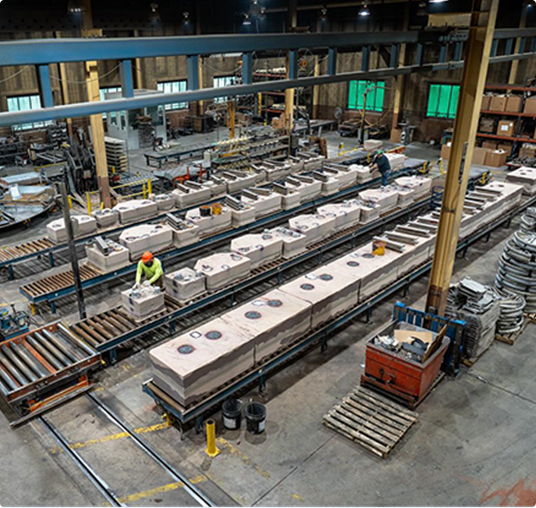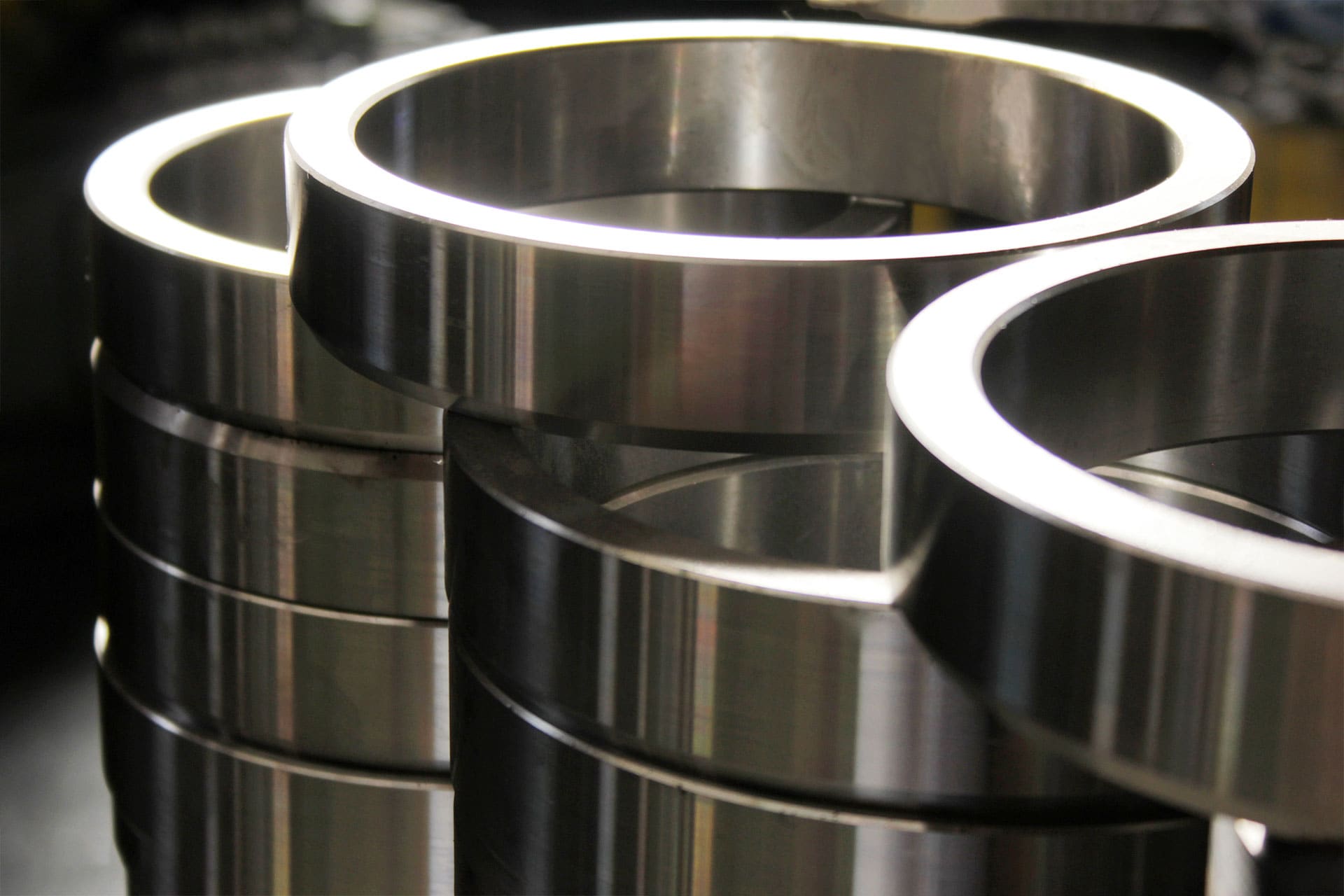Discover how Aluminum Foundry operations achieve consistent results
Wiki Article
Exploring the Versatile Makes Use Of and Applications of Light Weight Aluminum Castings in Modern Industries
Light weight aluminum castings have actually ended up being integral to different modern-day sectors as a result of their unique buildings. They provide significant advantages in weight decrease, thermal conductivity, and rust resistance. From automobile developments to applications in consumer items and construction, their flexibility is exceptional. Yet, truth degree of their effect expands past instant benefits, hinting at more comprehensive implications for sustainability and efficiency. What exists in advance for light weight aluminum spreadings in an ever-evolving commercial landscape?Automotive Industry Innovations
The automotive market has progressively welcomed light weight aluminum spreadings to boost car efficiency and efficiency. By utilizing light weight aluminum, producers can generate lighter parts, which add to enhanced fuel economy and reduced discharges. Secret applications consist of engine blocks, transmission situations, and architectural parts, where the material's strength-to-weight ratio provides sturdiness without including excess weight.Aluminum spreadings likewise offer exceptional thermal conductivity, which helps in better warm dissipation, consequently boosting engine efficiency. Moreover, improvements in casting innovations, such as die casting and sand casting, allow the production of complex geometries, permitting for ingenious designs that maximize area and functionality.
The recyclability of aluminum lines up with sustainability objectives in the automobile market, advertising eco-friendly practices. As the market proceeds to innovate, using aluminum spreadings is likely to broaden, driving further innovations in vehicle layout and performance.
Aerospace Improvements and applications
While the aerospace market remains to focus on weight reduction and fuel efficiency, aluminum castings have arised as a critical material choice for various applications. Their lightweight nature, paired with high strength-to-weight proportions, enables significant enhancements in aircraft performance and efficiency. Light weight aluminum spreadings are commonly utilized in structural parts, such as fuselage frames and wing parts, where minimizing weight is important.Current improvements in aluminum casting innovations, consisting of improved alloy formulations and accuracy spreading techniques, have actually better boosted the product's efficiency capabilities. These innovations allow the production of complex geometries and complex styles while maintaining architectural honesty. Additionally, light weight aluminum's outstanding rust resistance warranties durability and integrity in severe aerospace settings.
As the aerospace sector increasingly accepts sustainability, light weight aluminum castings use a recyclable solution that lines up with green methods, making them a crucial element in the advancement of next-generation aircraft.
Consumer Goods and Everyday Products
As consumers significantly seek lightweight yet durable products for everyday items, light weight aluminum castings have actually gotten appeal in numerous consumer products. The unique residential or commercial properties of aluminum, including its resistance to deterioration and outstanding thermal conductivity, make it an optimal choice for things like pots and pans, home devices, and exterior equipment. For example, aluminum cast pots and frying pans provide also warm circulation, enhancing cooking performance. In addition, the use of light weight aluminum in things such as bike frames and luggage guarantees a balance between toughness and mobility. Makers appreciate aluminum castings for their versatility, as they can be easily molded right into intricate shapes while keeping architectural integrity. Additionally, the capability to recycle aluminum without weakening its residential or commercial properties straightens with growing consumer choices for sustainable products. Overall, aluminum castings are integral to the production of durable, useful, and visually pleasing customer goods, fulfilling the needs of modern-day lifestyles.Building and Architectural Utilizes
Aluminum castings have come to be a crucial part in building and construction and building design, especially due to their toughness and lightweight nature. These residential properties make aluminum an optimal option for different applications, consisting of architectural components, facades, and decorative attributes - Metal Castings. Home builders and designers progressively utilize light weight aluminum castings for window structures, doors, and roof, enhancing both functionality and looks. The material's resistance to rust additionally extends its lifespan, minimizing upkeep costs and ensuring durability in varied ecological problemsIn addition, light weight aluminum can be quickly formed right into intricate styles, enabling for ingenious building expressions. Its convenience helps with the development of custom-made pieces that meet certain layout requirements, from elaborate railings to complex assistances. As sustainability ends up being a concern, aluminum's recyclability contributes to its charm in environment-friendly building practices. On the whole, light weight aluminum spreadings are reinventing the building and construction market by offering light-weight, long lasting, and aesthetically attractive remedies.
Electric and Digital Parts
Aluminum castings play a crucial duty in the production of lightweight electric rooms, which boost mobility and performance in different applications. On top of that, their exceptional thermal conductivity makes them optimal for warmth sinks, ensuring peak efficiency and long life of digital components. Additionally, light weight aluminum's conductive buildings add to its use in different electric conductors, highlighting its relevance in modern technology.Light-weight Electric Units
Light-weight electric rooms play a vital role in safeguarding delicate digital elements from ecological elements and physical damages. Created from light weight aluminum spreadings, these rooms are a knockout post valued for their strength-to-weight proportion, making them optimal for various applications throughout markets. Their light-weight nature help in lowering total system weight, which is essential in portable and mobile electronic devices. Light weight aluminum's deterioration resistance enhances toughness, extending the life-span of the encased components. The capability to mold and mildew light weight aluminum into complicated shapes enables customized designs, satisfying particular demands Read Full Report while making certain efficient warm dissipation. Additionally, these units can be conveniently integrated right into existing systems, giving versatility and convenience in modern technical atmospheres. Overall, lightweight light weight aluminum enclosures significantly add to the efficiency of electronic devices.Warm Sinks and Conductors
While lots of materials are used in digital parts, light weight aluminum spreadings stand apart for their effectiveness in heat monitoring as warmth sinks and conductors. Their exceptional thermal conductivity enables efficient warm dissipation, which is important in stopping the overheating of digital devices. Light weight aluminum's lightweight nature better enhances its suitability for applications where weight is a substantial element, such as in aerospace and auto sectors. In addition, light weight aluminum spreadings can be quickly formed into complicated forms, supplying design adaptability for enhancing thermal performance. The rust resistance of aluminum also contributes to the durability and dependability of these elements in various environments. As innovation breakthroughs and tools become a lot more small, the need for effective warm administration options, like aluminum castings, proceeds to expand.Marine Industry Application
The aquatic industry significantly counts on aluminum castings for their remarkable durability and rust resistance. These homes make light weight aluminum an optimal option for various applications, including boat hulls, engine elements, and aquatic equipment. The light-weight nature of aluminum castings enables improved gas efficiency and easier maneuverability in watercraft, which is essential for both leisure and industrial vessels.
Aluminum spreadings also supply considerable price advantages due to their lengthy life expectancy and reduced maintenance needs, lowering the general functional expenditures for marine drivers. Furthermore, the adaptability of aluminum enables for intricate styles that can satisfy particular efficiency demands.
Suppliers in the aquatic industry use advanced spreading methods to generate intricate forms, guaranteeing that elements meet strenuous safety and security and efficiency standards. As the demand for high-performance aquatic vessels grows, light weight aluminum castings are placed as a key product in boosting the functionality and longevity of aquatic tools.
Sustainability and Recycling in Light Weight Aluminum Casting

Light Weight Aluminum Recycling Process
Reusing aluminum plays an essential role in reducing ecological influence and conserving resources within the casting market. The aluminum reusing procedure begins with the collection of scrap aluminum, which can consist of old parts, making waste, and post-consumer products. This scrap is after that arranged, cleaned up, and shredded into tiny items to help with melting.When prepared, the resource light weight aluminum scrap is thawed in a heater at reduced temperature levels than main aluminum manufacturing, significantly decreasing energy usage. The molten aluminum is after that cast into ingots or various other shapes for reuse in different applications - Aluminum Foundry. This closed-loop system allows for the efficient healing of aluminum, maintaining its properties while minimizing the demand for virgin materials. Consequently, the recycling procedure is an important element of lasting methods in light weight aluminum casting
Ecological Advantages
While light weight aluminum spreading plays an important function in different markets, its ecological benefits are specifically impressive pertaining to sustainability and source preservation. The light-weight nature of aluminum adds to power effectiveness in transportation, reducing gas consumption and discharges. In addition, aluminum casting facilitates making use of recycled products, considerably lowering the power needed for manufacturing contrasted to primary aluminum. This recycling process minimizes waste and lessens the environmental influence connected with mining and refining resources. Aluminum is 100% recyclable without destruction of its properties, advertising a sustainable lifecycle. By selecting aluminum casting, industries can significantly decrease their carbon footprint while promoting resource efficiency, making it a crucial option in the quest of eco-friendly production techniques.Closed-Loop Solutions

Regularly Asked Questions
What Are the Trick Benefits of Aluminum Castings Over Various Other Materials?
Light weight aluminum spreadings use lightweight residential properties, excellent deterioration resistance, and high strength-to-weight proportions. They can be easily molded right into complicated shapes, provide good thermal and electric conductivity, and are cost-effective, making them preferable over many alternative products.Just how Is the Light Weight Aluminum Casting Refine Eco Friendly?
The light weight aluminum spreading process is eco-friendly because of its recyclability, low power consumption, and lowered waste manufacturing. Its capability to make use of recycled materials minimizes the carbon impact, advertising sustainability within producing techniques.What Prevail Challenges in Light Weight Aluminum Spreading Production?
Typical obstacles in light weight aluminum casting manufacturing consist of maintaining dimensional precision, managing thermal contraction, protecting against defects like porosity and inclusions, guaranteeing appropriate mold and mildew layout, and enhancing manufacturing efficiency while reducing material waste and ecological influence.Just How Do Light Weight Aluminum Castings Contrast in Expense With Various Other Manufacturing Methods?
Aluminum castings usually supply affordable costs contrasted to other manufacturing techniques, especially for tool to high-volume manufacturing. Their reduced initial tooling costs and efficient material use can result in favorable economics gradually.What Future Patterns Are Expected in Light Weight Aluminum Casting Modern Technology?
Future fads in light weight aluminum casting modern technology are anticipated to include advancements in automation, improved alloy make-ups, improved recycling techniques, and the combination of 3D printing, all aimed at boosting effectiveness, lowering prices, and lessening environmental effect.Current developments in aluminum spreading technologies, consisting of boosted alloy solutions and precision spreading methods, have actually further improved the material's efficiency abilities. Light weight aluminum castings have actually ended up being an essential element in construction and architectural style, especially due to their toughness and lightweight nature. The aluminum recycling process starts with the collection of scrap light weight aluminum, which can consist of old elements, manufacturing waste, and post-consumer items. As soon as prepared, the light weight aluminum scrap is melted in a heating system at reduced temperatures than main light weight aluminum manufacturing, substantially decreasing power consumption. In addition, light weight aluminum casting facilitates the usage of recycled products, greatly decreasing the power needed for production compared to main aluminum.
Report this wiki page